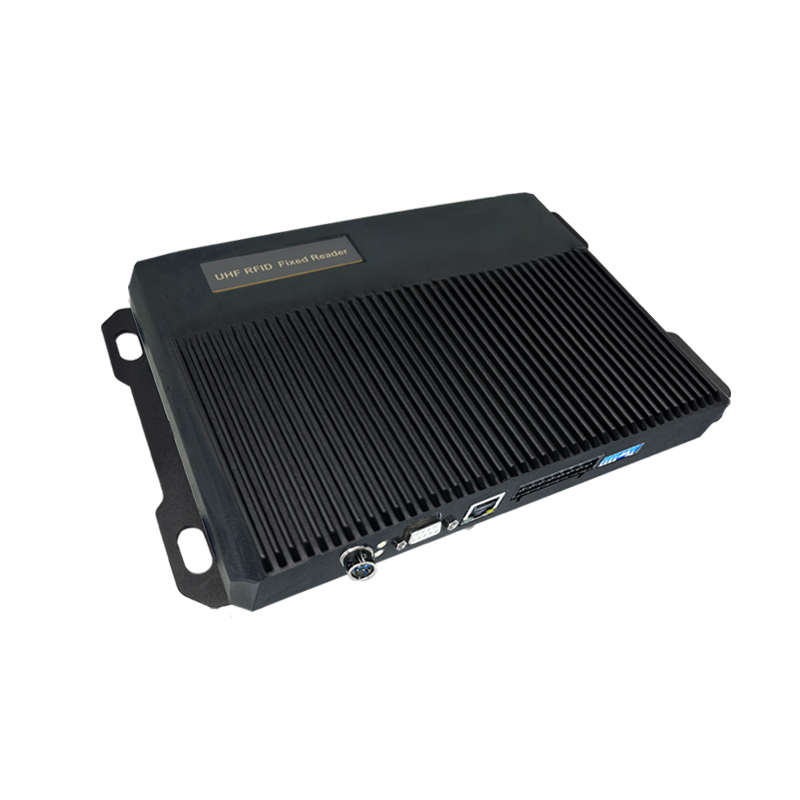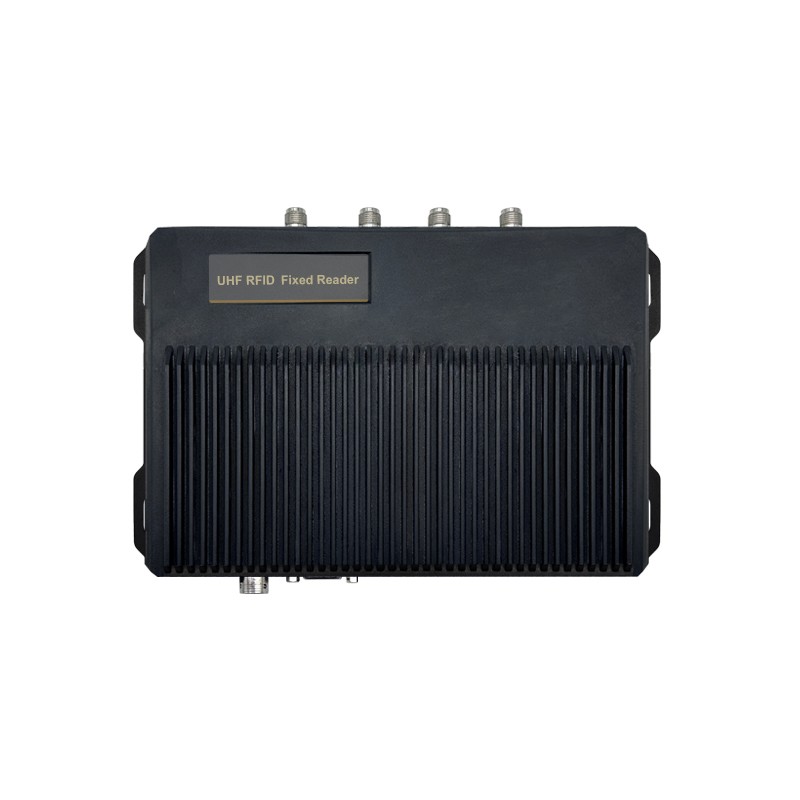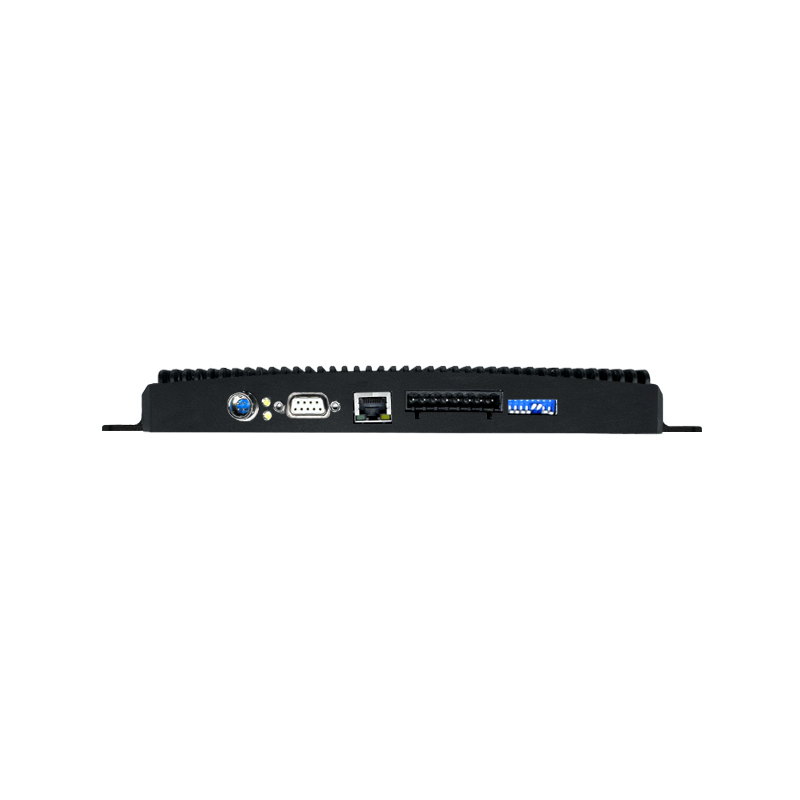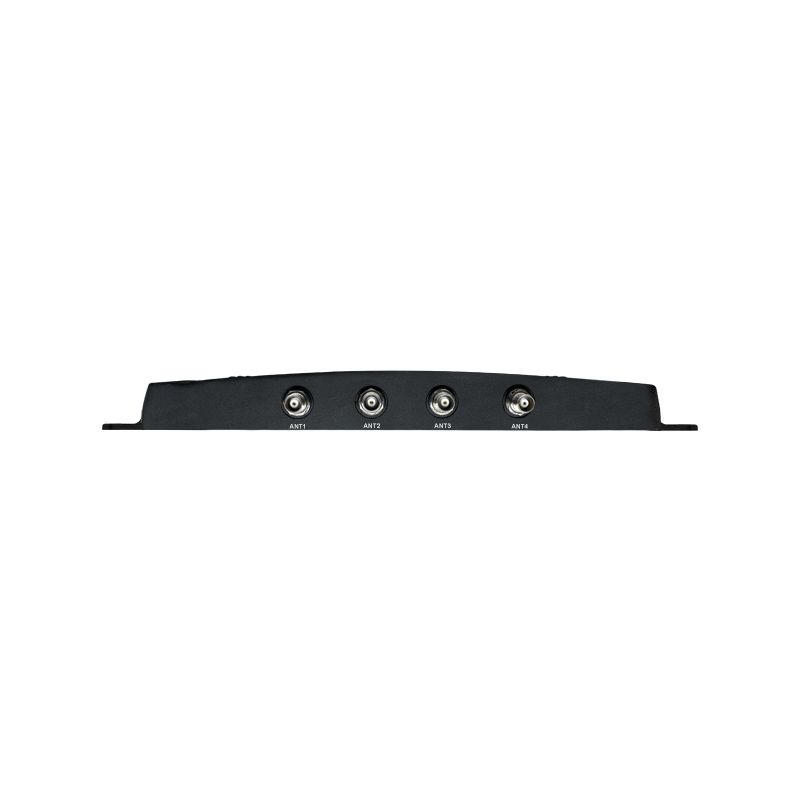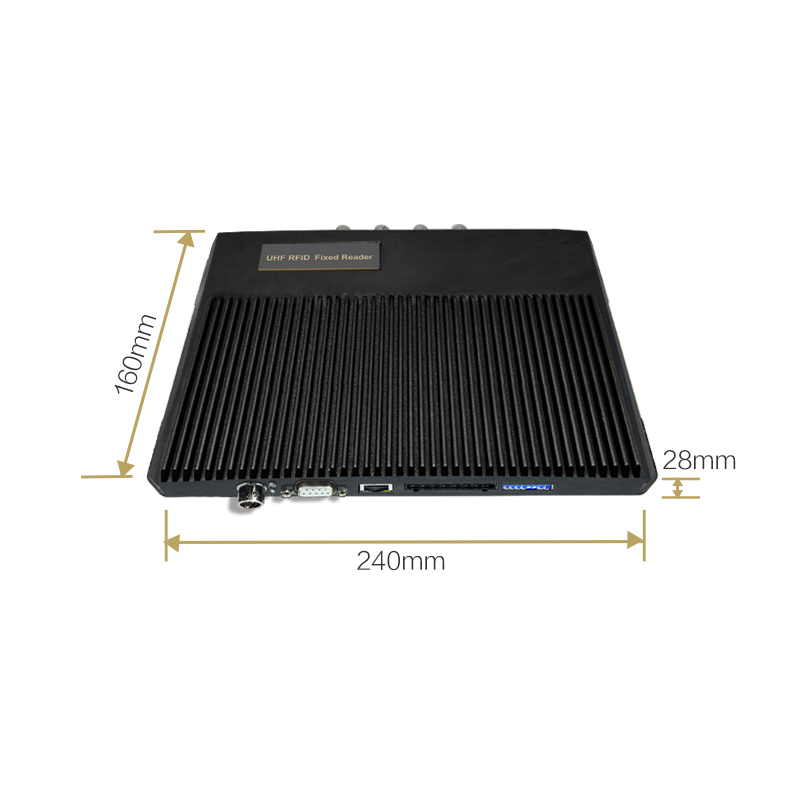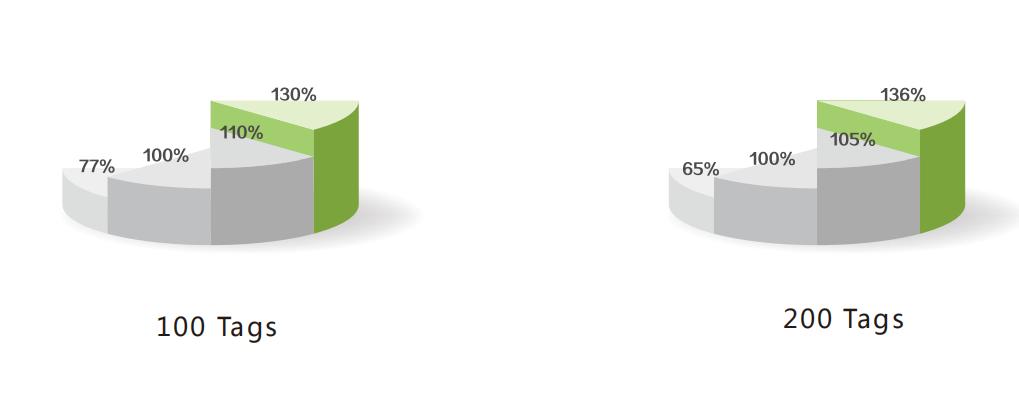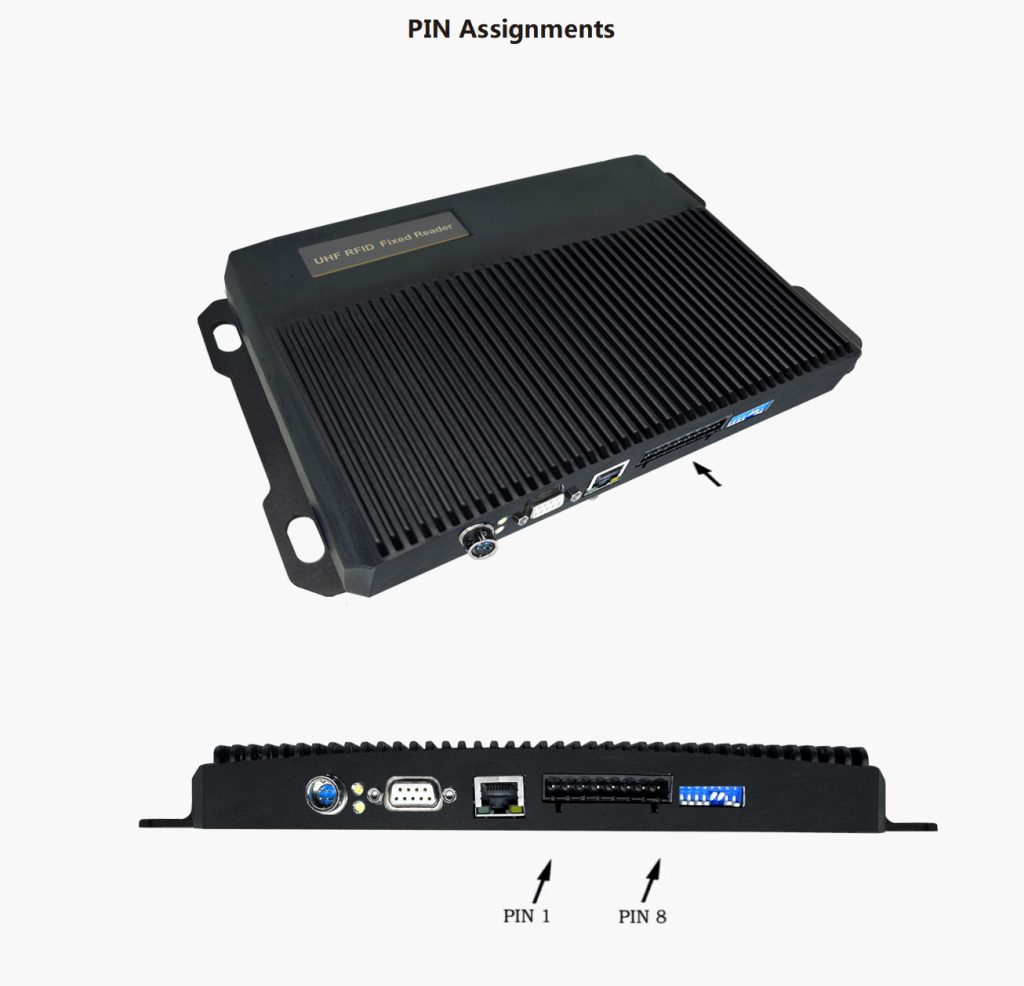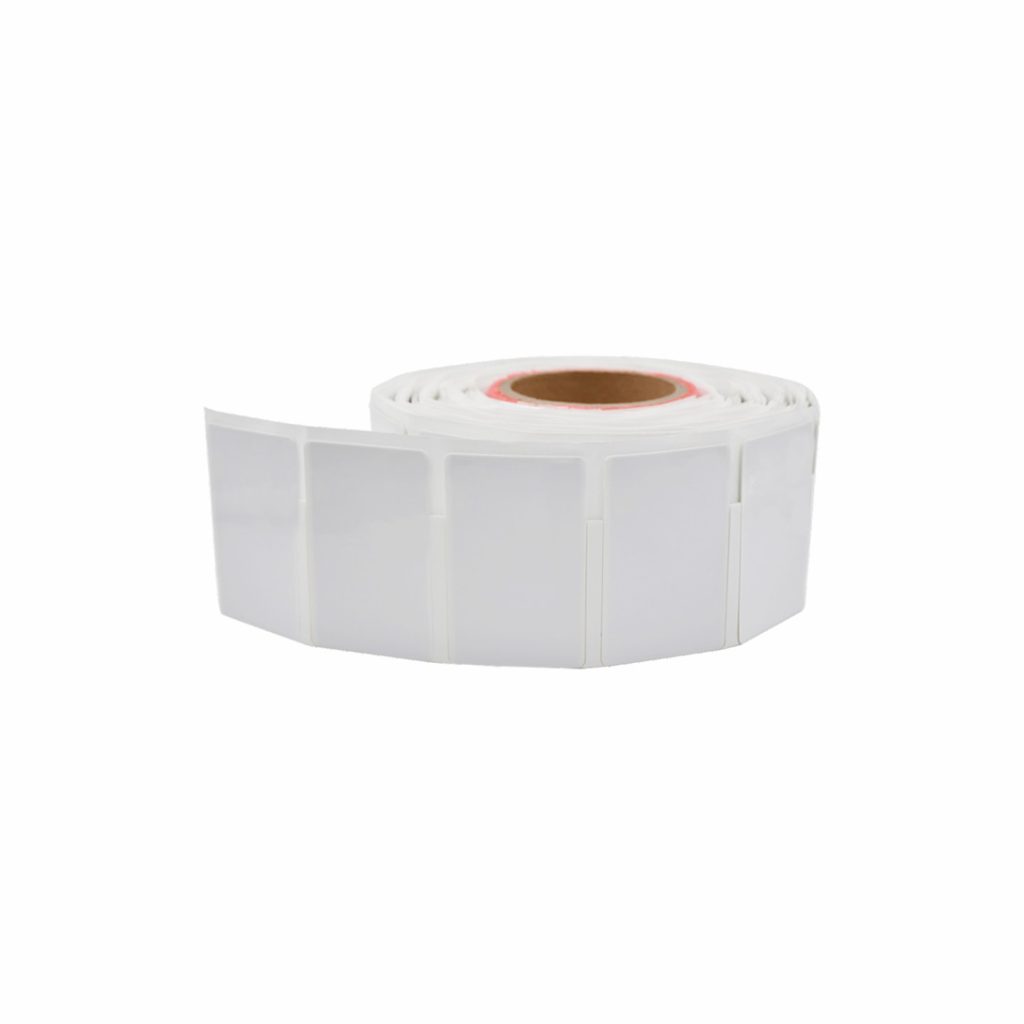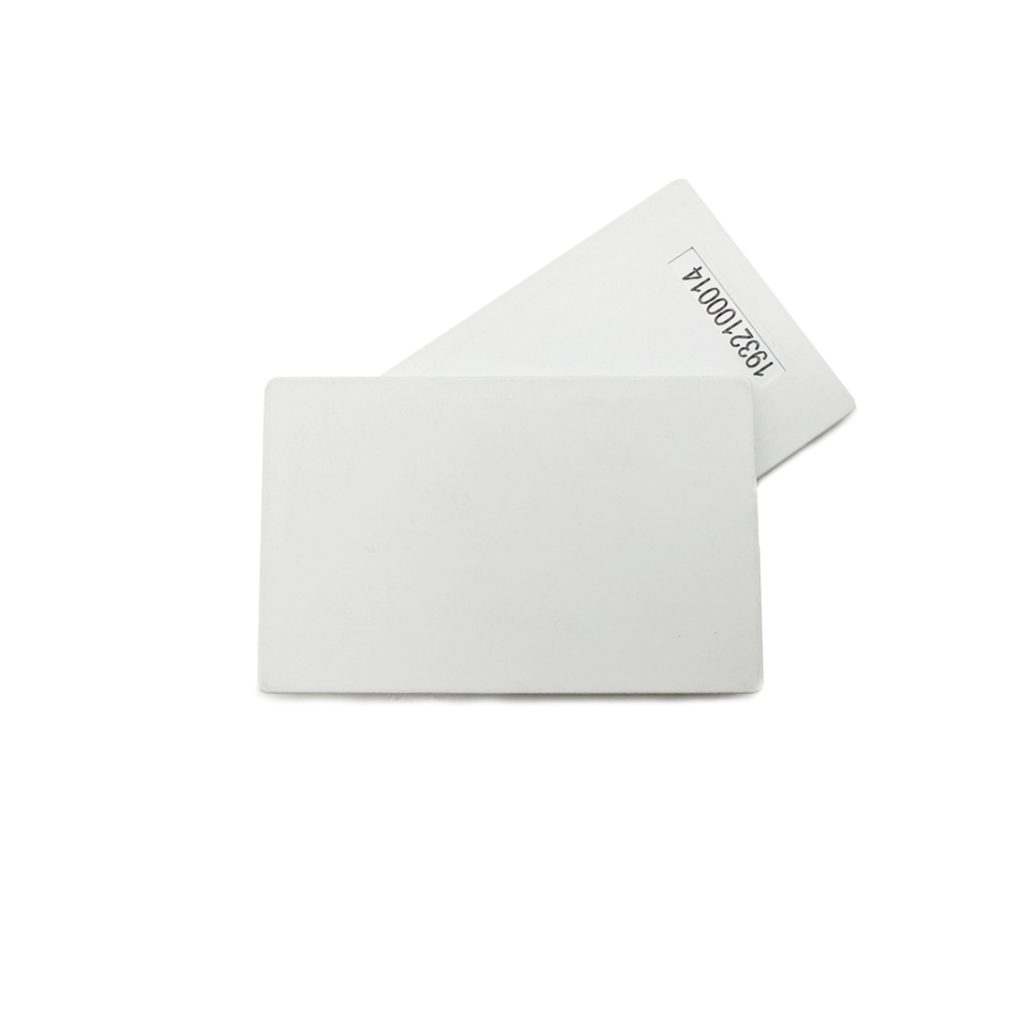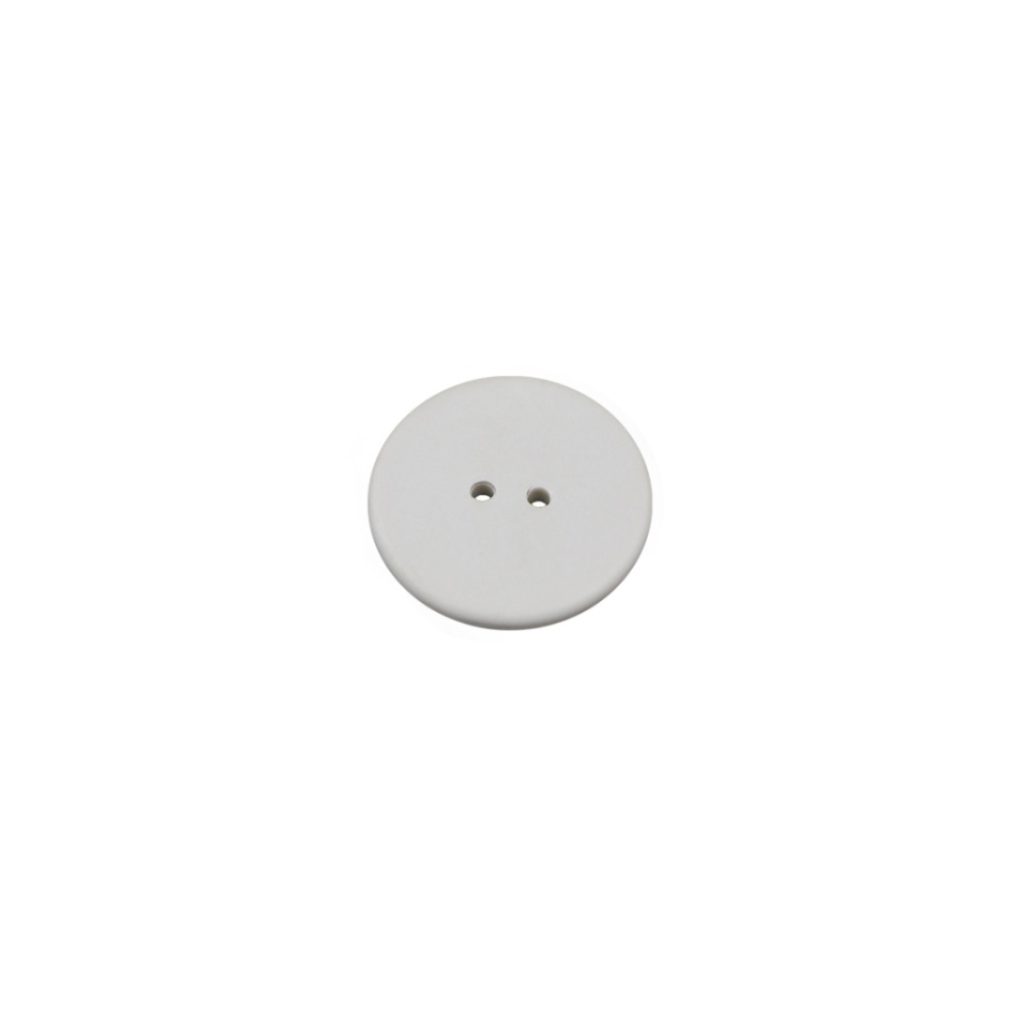RS-PR01 Fixed Four-Port UHF RFID Passive Reader
RS-PR01 is a new designed fixed UHF RFID reader with 4 ports for antennas, Impinj E710 chipset, support multiple tags reading up to 700 times/second, 0-15 meters long range reading.
Widely used for asset management, inventory/warehouse management, vehicle ETC management etc.
Functions
- 902-928Mhz FCC, 866-868Mhz CE, other frequency selectable
- Connect 4 antennas outside, TNC/RP-TNC connector
- Support standard RS-232, Ethernet communication interfaces
- Impinj E710 RFID chip, fast and accurate reading rate
- 18000-6B/6C full compatible
- Multi-reader operating under intensive environment
Applications
- Warehouse logistics, supply chain management
- Vehicle parking, intelligent weighing
- E-Toll on highway
- IT asset inventory management
- Industry 4.0 smart manufacturing
Recommended Customers
- System integrators
- RFID distributors
- Software developers
- High-end customers
Key Features
Feature | Descriptions |
Chip set | Impinj Indy E710 chip as RF transceiver |
Dual CPU Architecture | Main CPU: tag inventory; Assistant CPU: data management. Tag inventory and data transfer are parallel and simultaneous. |
Fast 4-Antenna Switch Inventory | Every antenna’s inventory duration is configurable (Minimum Duration: 30 ms). Polling from ANT 1 to ANT 4. |
Two Modes for Inventory | Buffer mode and Real-time mode. Tags will be stored as buffer under buffer mode. Tags will send data under real-time mode. This mode allows user to get tag data instantly. |
Hardware System Halt Detection | Hardware CPU status surveillance. Run for 24 hours X 365 days without system halt. |
PA Health Surveillance | PA status surveillance. Make sure PA never works under saturated state. Protected it for long term operation. |
Antenna Connection Detection | Detect antenna connection. Protective for RF receiver. It can be cancelled with command. |
Temperature Sensor | Multi-point surveillance for accurate operating system temperature. |
Power Output Correction | Dual modules making sure output power can be fine adjusted. Dual modules working and keeping correction. |
Excellent Cooling Design | Heat dissipation and large cooling surface design. Thermal coupling interfaces using high-thermal conductivity solid materials which ensure stable performance under high temperature. |
Electrical Parameters | |
Frequency | North America: 902MHz~928MH Europe: 865MHz~868MHz China: 920MHz~925MHz |
Interface Protocol | EPC global UHF Class 1 Gen 2 / ISO 18000-6C |
Dimension | 240(L)*180(W)*28(H)mm |
Weight | 1.2kg |
Body Material | Die-cast aluminum |
Power | DC 12V ~ 18V |
Max Operating Current | 700mA +/-5% @ DC 12V Input |
Communication Interface | RS-232 or TCP/IP |
I/O | 2 input optical coupling & 2 output coupling |
Operating Temperature | – 20 °C ~ + 85 °C |
Storage Temperature | – 20 °C ~ + 85 °C |
Humidity | 5%RH – 95%RH (non -condensing) |
Output Power | 0 – 33dBm |
RF Connector | TNC/RP-TNC |
Receive Sensitivity | < -85 dBm |
Peak Inventory Speed | >700 tags/sec |
Tag Buffer Capacity | 1000 tags @ 96 bit EPC |
Tag RSSI | Supported |
Antenna Detector | Supported |
Ambient Temp Monitor | Supported |
Working Mode | Single/DRM |
Baud Rate | 115200 bps/38400bps |
Anti-Collision Algorithm Comparison
Notes
1.) The test is on the same hardware platform in real applications (Taking Impinj dynamic Q algorithm as the reference which is marked with 100%).
2.) The chart shows the comparison for the first round inventory performance.
3.) It is tested on the same hardware platform.
Algorithm | Description |
Standard fixed Q algorithm | • Standard 18000-6C algorithm. • The performance is reduced significantly when tag quantity gets larger. • The efficiency is not high when tag quantity is small. |
Impinj dynamic Q algorithm | • The algorithm of Impinj. • It has a good efficiency for various tag quantities. • It sacrifices some performance for the sake of compatibility |
I–Search dynamic Q algorithm V1.0 | • Based on Impinj dynamic Q algorithm. • The performance is optimized. • It’s the algorithm for firmware version 6.6 or below. |
I–Search dynamic Q algorithm V2.0 | • Based on Impinj dynamic Q algorithm. • It’s a brand new data structure, the performance of which is significantly improved for firmware version 6.7 or above. • The improvement of performance can be easily sensed after the first round of inventory especially when the tag volume increases. |
PIN Assignments
Our Services
- Wondering if our RFID Solutionscan suit you? Finding out is simple.
- We are offeringfree testing on your sample materials to run through with our equipment in our RSTC Lab. (You just need to provide testing equipment and sample)
- We supply customers with better product, quicker response, more value-added expertise service.
- We provide personalized customization services, such as printed logo, software and hardware customization etc.
Understand Needs
01
Define Requirements
02
Solution & Quotation
03
Confirm Details
04
Place
Order
05
Start Production
06
Test
&
Pack
07
Ship Worldwide
08
Receive & Confirm
09
Get a Quote


